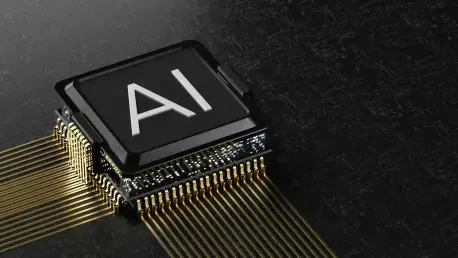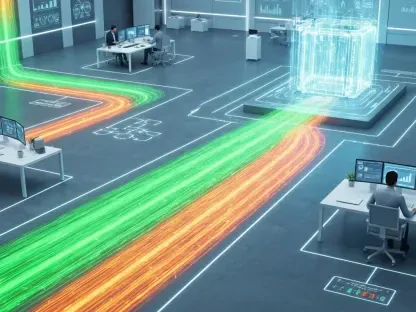Artificial Intelligence (AI) has become a pivotal force reshaping various sectors, including education, where its influence is increasingly profound. With generative AI’s advancement, educational methodologies are undergoing significant reevaluation, and the potential for AI to enhance student collaboration is being recognized more than ever before. AI’s integration into the educational system promises to transform how students interact, learn, and develop crucial life skills. The possibilities that AI brings to the table could fundamentally improve the collaborative dynamics among students, harnessing the collective power of group work and shared knowledge.
Collaborative Learning in the Age of AI
To fully leverage AI’s capabilities, educators must prioritize collaborative learning frameworks. Unlike traditional methods that often emphasize individual proficiency, the modern educational landscape requires students to cultivate the ability to work effectively within a team. Educational systems increasingly recognize the need to develop students’ communication skills, which are indispensable in this collaborative environment. AI can facilitate these processes by enabling platforms that simulate collaborative scenarios, allowing students to gain practical experience in teamwork. The ability to navigate group dynamics, appreciate diverse perspectives, and recognize individual strengths within a group is becoming paramount.
AI tools, such as virtual collaboration platforms, can assist educators in demonstrating practical applications of teamwork. These tools simulate real-world scenarios where students must work together to solve problems or complete projects, emphasizing the importance of collective efforts. By highlighting these experiences, AI can help students understand and appreciate the value of effective teamwork, leading to more robust collaborative skills. Additionally, AI offers refined assessments of group interactions, identifying areas where students excel and where improvements are needed, thus providing targeted interventions to enhance collaborative learning outcomes.
The Role of AI in Enhancing Critical Thinking
AI’s impact on students’ critical thinking development is noteworthy, as it provides diverse opportunities for learners to engage in higher-order thinking processes. By presenting students with varied data sets and types of information, AI systems can foster analysis, synthesis, and evaluation skills. These skills are vital as students learn to differentiate between high-quality work and substandard work, akin to the concept of ‘connoisseurship.’ The ability to fact-check and draw accurate conclusions from AI-generated content becomes an essential part of the learning process, promoting discernment and critical evaluation.
AI-driven educational tools can further aid in developing these critical thinking skills. For example, AI can curate tailored educational content that challenges students to engage in complex problem-solving activities. These tools can provide instant feedback, guiding students in refining their decision-making processes and learning to question the validity of information they encounter. Such interactive learning experiences encourage students to adopt a more critical approach to their studies, developing the ability to think independently and reason logically. This transformative impact on critical thinking skills underscores AI’s valuable role in modern education.
Creating Responsible Digital Citizens
A core objective of education is to mold responsible and ethical digital citizens, and AI can significantly contribute to achieving this goal. AI’s integration into educational systems necessitates the emphasis on ethical usage of technology and fostering a sense of digital responsibility among students. Understanding brain plasticity and human potential can assist in guiding students to utilize AI as a tool for positive growth and learning, rather than devising ways to circumvent educational systems. By instilling these values, educators can ensure that students harness AI intentionally and ethically.
AI can guide students in using technology to enhance their learning experiences and contribute to their overall development. By embedding principles of digital ethics within the AI-driven curriculum, educators can demonstrate practical applications of responsible technology use. AI tools can monitor and provide feedback on students’ interactions with technology, highlighting both positive uses and potential misuse. This proactive approach helps in creating a generation of digital citizens who are not only tech-savvy but also conscious of the ethical implications of their actions, setting a foundation for responsible digital behavior.
Addressing AI Literacy Gaps
Despite AI’s transformative potential, many educational institutions still grapple with adequately integrating AI literacy into their curricula. There is a pressing need to develop comprehensive AI literacy programs that cater to both students and teachers. As students independently explore AI’s capabilities, there is a risk of misuse, including cheating or bypassing educational requirements. Structured AI literacy initiatives can address these challenges, ensuring that students not only understand the functionalities of AI but also its ethical applications.
To bridge AI literacy gaps, educators must focus on developing curricula that incorporate essential AI concepts, practical applications, and ethical considerations. Professional development programs for teachers can empower them to confidently teach AI literacy, fostering a learning environment where students are encouraged to explore AI responsibly. Interactive AI tools and platforms can facilitate hands-on learning experiences, helping students grasp complex AI concepts intuitively. By closing the AI literacy gap, educational institutions can prepare students for a future where AI is ubiquitous, ensuring they are equipped with the knowledge and ethical understanding to navigate this landscape effectively.
Embracing Cognitive and Cultural Differences
The integration of AI into education underscores the importance of appreciating cognitive and cultural differences among students. These variances, often viewed through the lens of neurodiversity, can enrich collaborative learning environments. AI’s ability to navigate and respect these differences enables the creation of inclusive educational frameworks that celebrate diverse perspectives. Recognizing and valuing these unique inputs can foster a more collaborative and harmonious learning atmosphere, where students learn to appreciate varied viewpoints and contributions.
Educators can leverage AI to facilitate understanding and acceptance of cognitive and cultural differences. AI tools can customize learning experiences based on individual student profiles, catering to different learning styles and needs. This personalization helps in addressing diverse cognitive capabilities, allowing students to learn in ways that best suit them. Additionally, AI can provide insights into cultural differences within a classroom, promoting cross-cultural understanding and inclusive practices. By embracing these differences, educators can create a learning environment that celebrates diversity and encourages collaborative efforts, enriching the educational experience for all students.
A Holistic Approach to Education
Transforming education in the age of AI requires a shift from rote memorization to a holistic understanding of information. This paradigm involves teaching students to collaborate with entities, human or AI, possessing greater knowledge. Moving away from traditional learning methods, a holistic approach ensures that students develop broader skills, including problem-solving, critical thinking, and collaborative abilities. AI’s integration into the curriculum can facilitate this shift, providing tools and platforms that support comprehensive learning experiences.
Comprehensive curriculum reforms are vital to adapt effectively to the integration of AI technologies. Educators must design curricula that encompass practical applications of AI, encouraging students to engage in experiential learning. AI-driven assessments can help in identifying learning gaps and providing personalized educational interventions. This holistic approach to education nurtures students to be adaptable, knowledgeable, and proficient in leveraging AI tools for their academic and personal growth. By fostering a deeper understanding of information and collaborative skills, educators can help students thrive in an AI-augmented world.
The Importance of Leadership in AI Integration
Artificial Intelligence (AI) has emerged as a transformative force, significantly impacting various sectors, with education being a primary beneficiary. As generative AI technologies continue to progress, educational methodologies are undergoing a substantial reevaluation. The potential of AI to enhance student collaboration is more recognized now than ever. Integrating AI into the educational landscape stands to revolutionize how students interact with each other, learn new concepts, and develop vital life skills. AI holds great promise in improving the dynamics of student collaboration, utilizing the strengths of group work and collective knowledge. By fostering an environment where shared learning experiences are amplified, AI can significantly contribute to the educational growth of students. The role of AI in education is not merely complementary; it offers a transformative potential that could drive more efficient teaching frameworks and foster collaborative learning environments. The future of education could see a dramatic shift, harnessing the power of AI to promote deeper understanding and cooperative learning among students.









